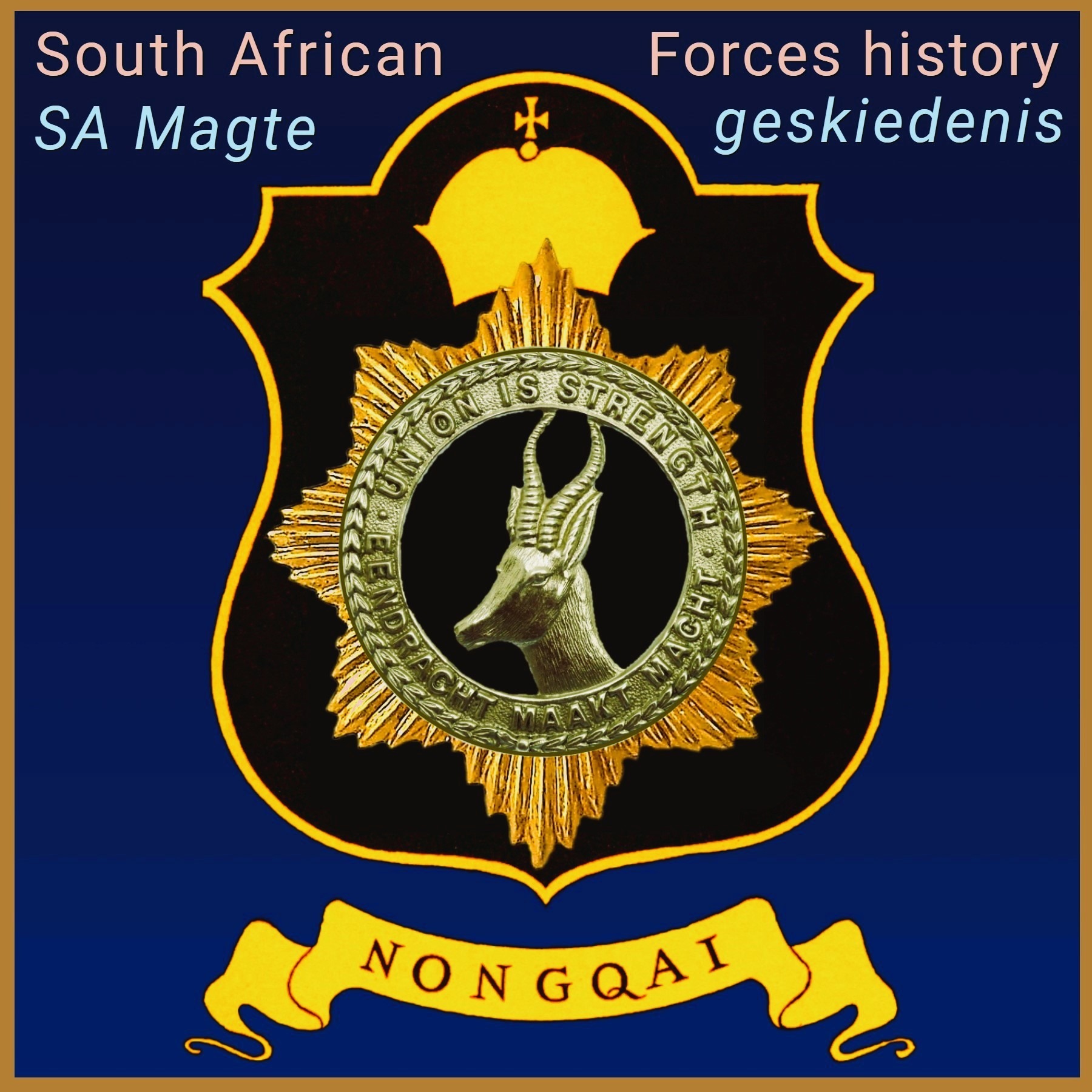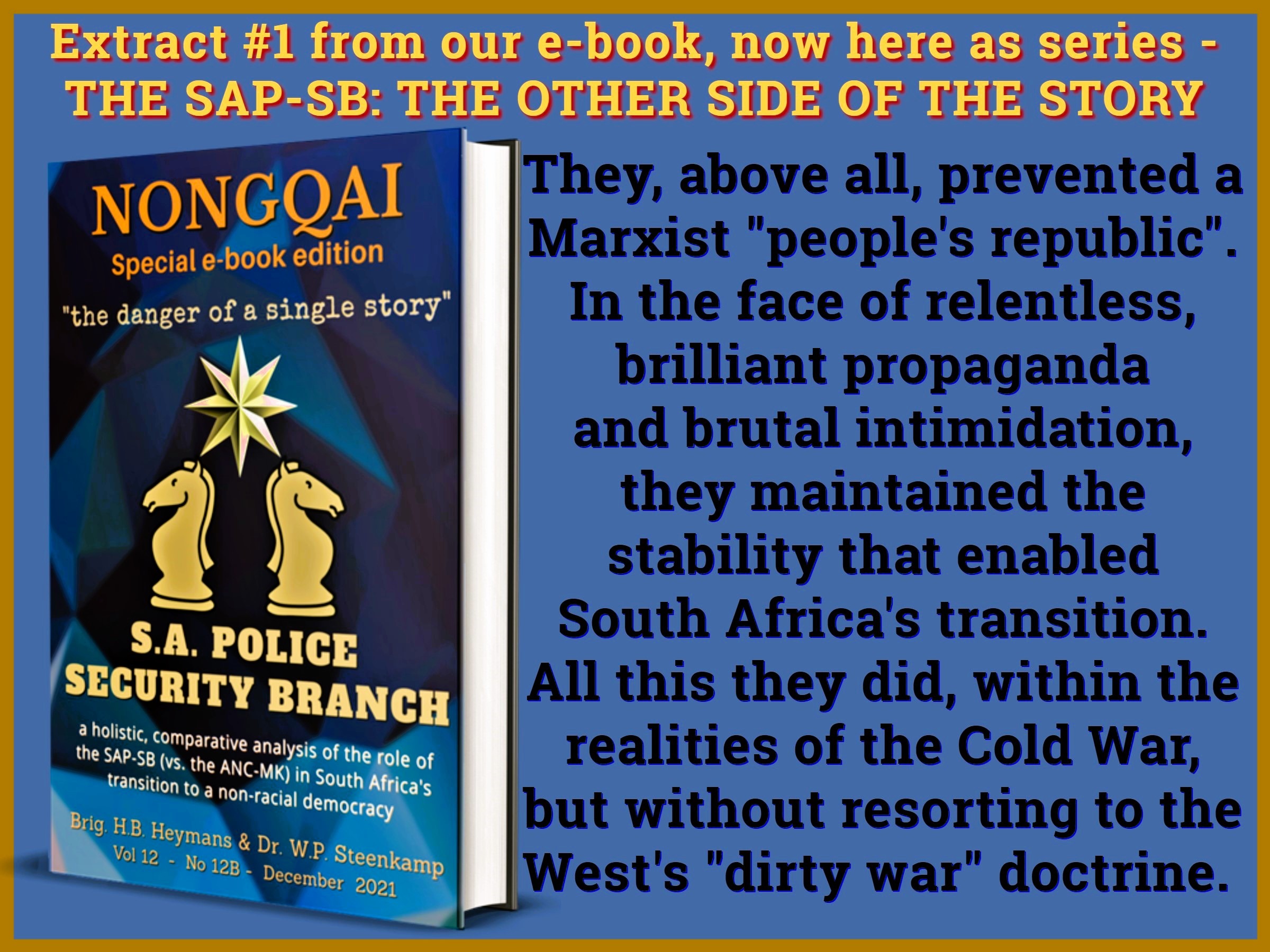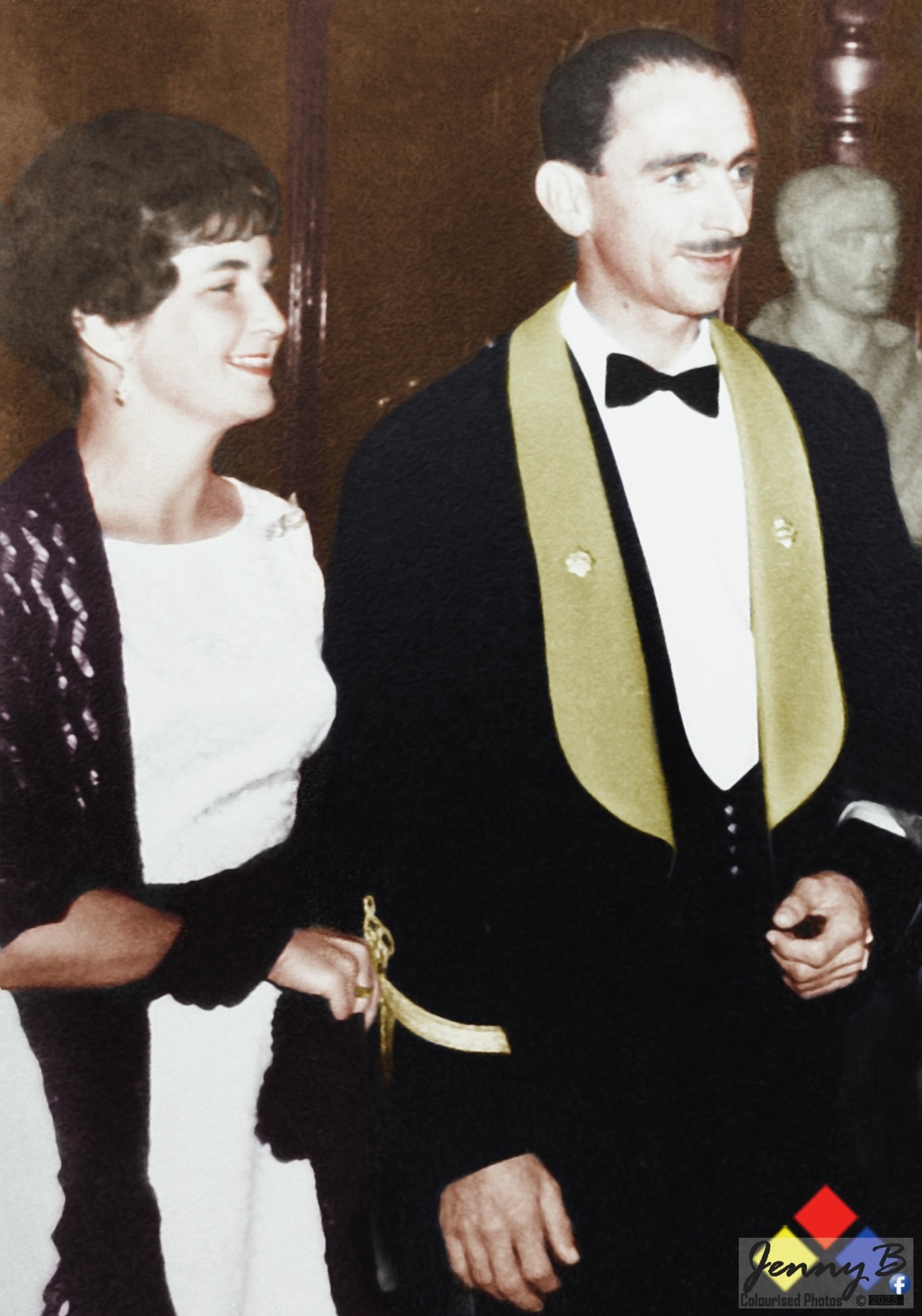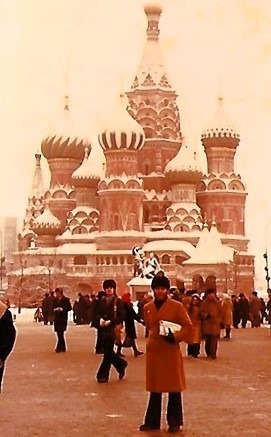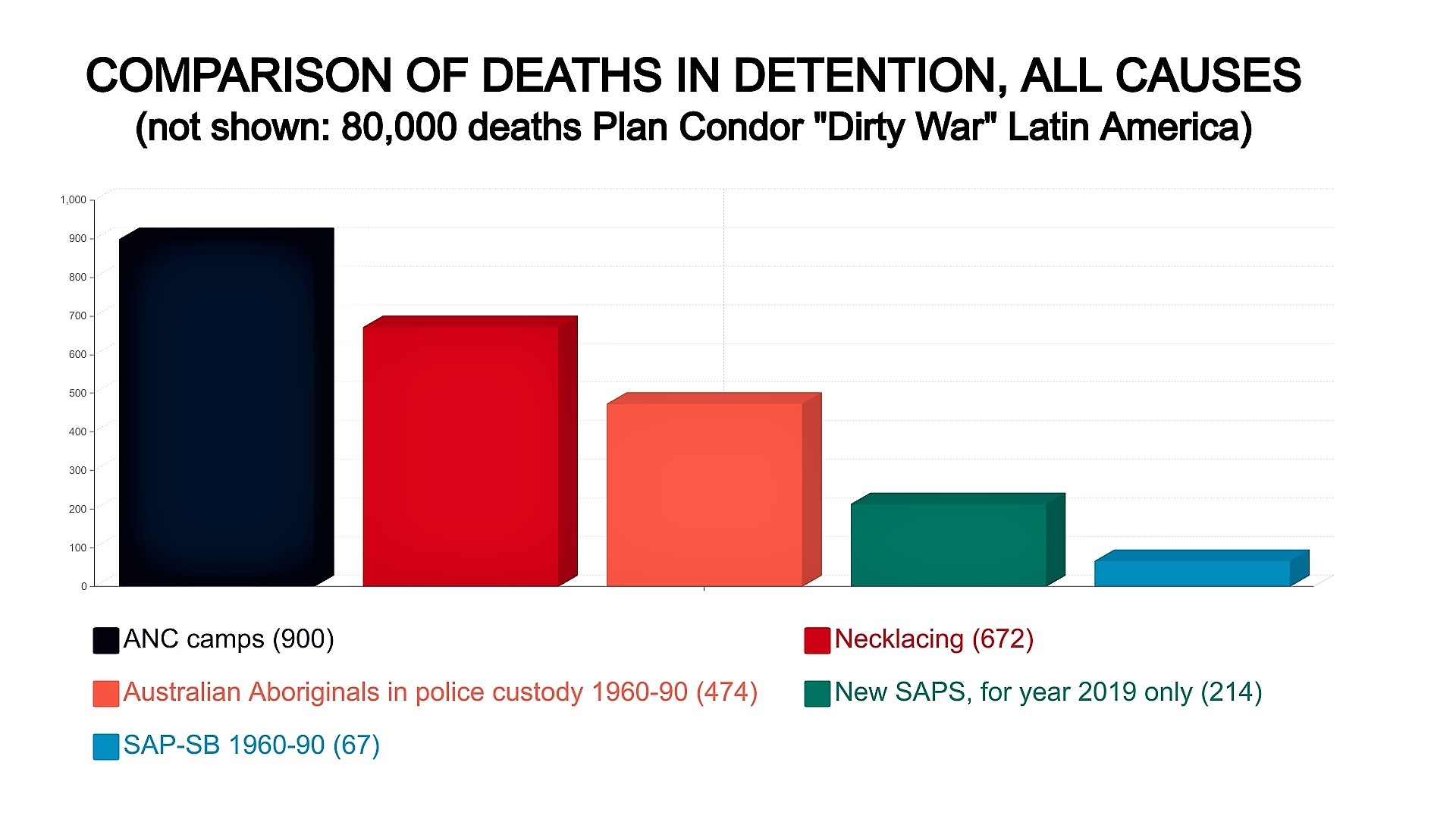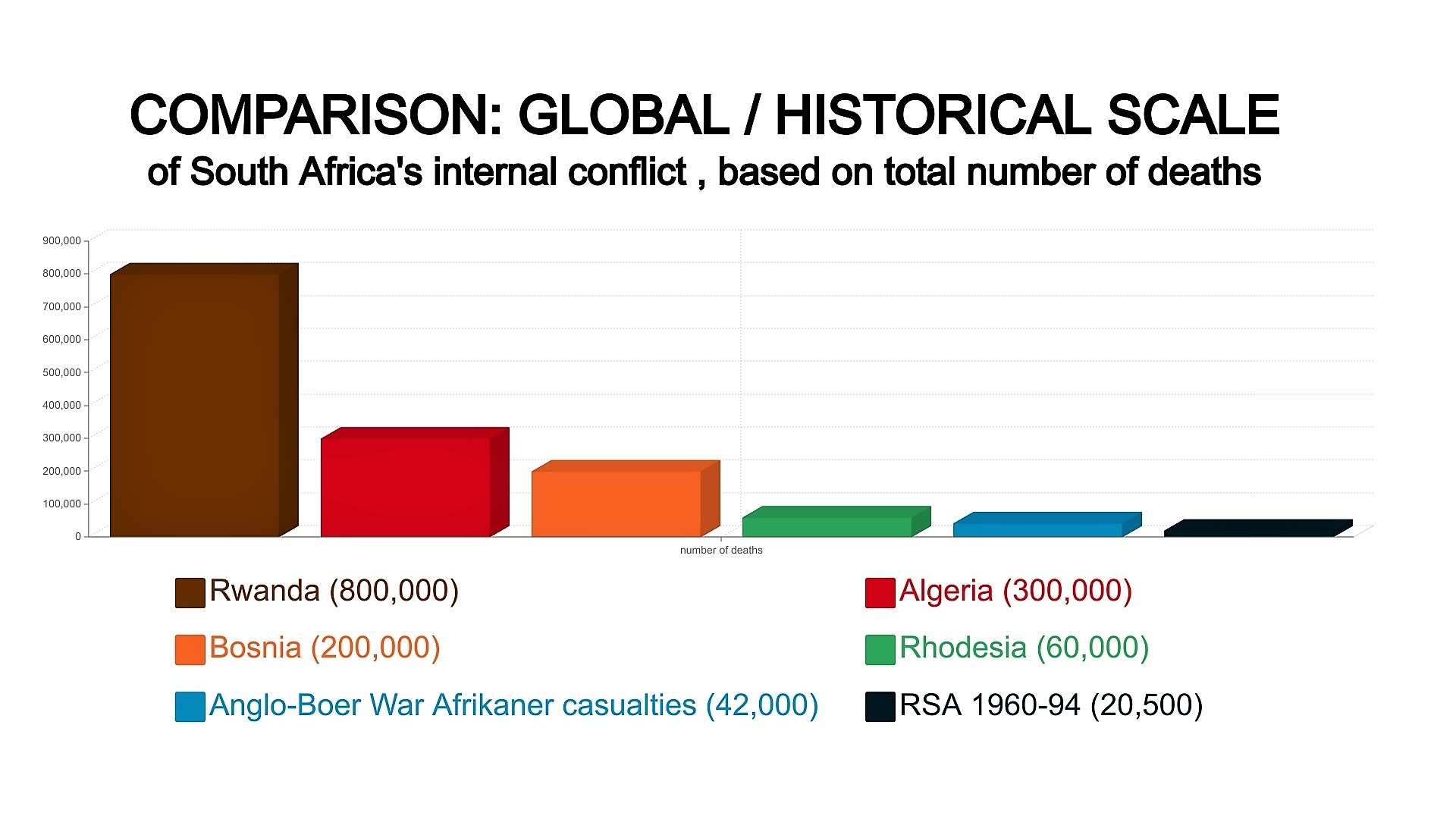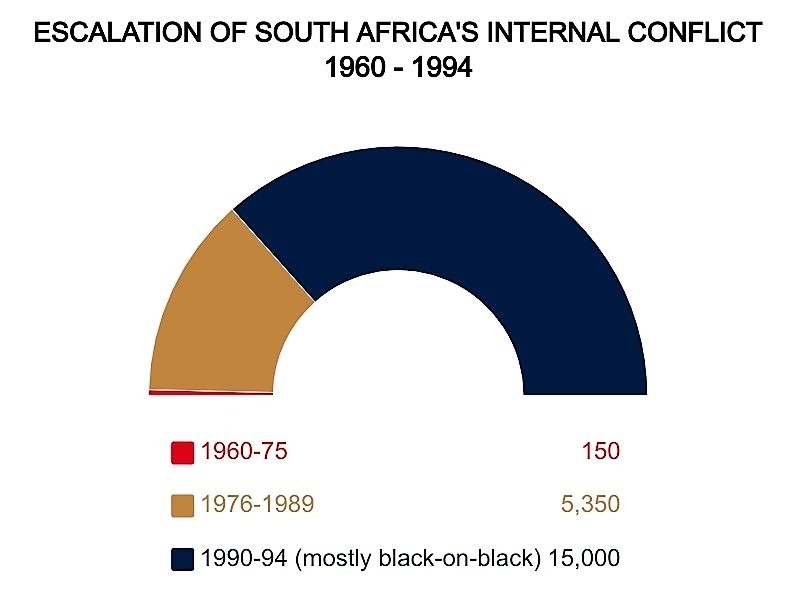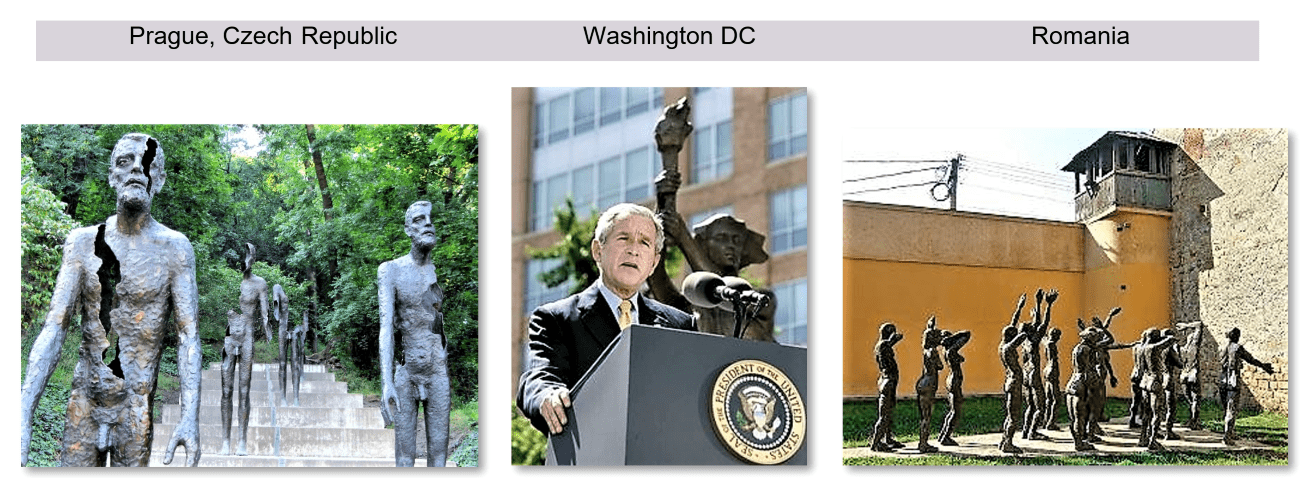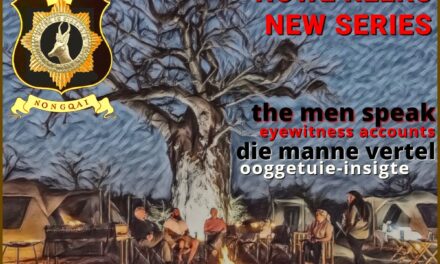ABSTRACT: A “single story” has established itself in public discourse, around the topic of South Africa’s “armed struggle”. But does it represent the truth, the whole truth and nothing but the truth, about the role of the S.A. Police Security Branch in the transition to a non-racial Western-style democracy? Or about the role and debilities of the ANC-MK as a guerrilla army? Nongqai presents here a serialisation of its e-Book on the topic, with this being Part 1.
KEYWORDS: SAP-SB; South African Police Security Branch; armed struggle; Cold War; ANC-MK; African National Congress Umkhonto we Sizwe; Nelson Mandela; South African Communist Party.
AUTHORS: Brig. HB Heymans and Dr. WP Steenkamp (this first part, written by Dr. Steenkamp)
"THE DANGER OF A SINGLE STORY" - EXTRACT #1
The SAP-SB vs the ANC-MK during the Armed Struggle
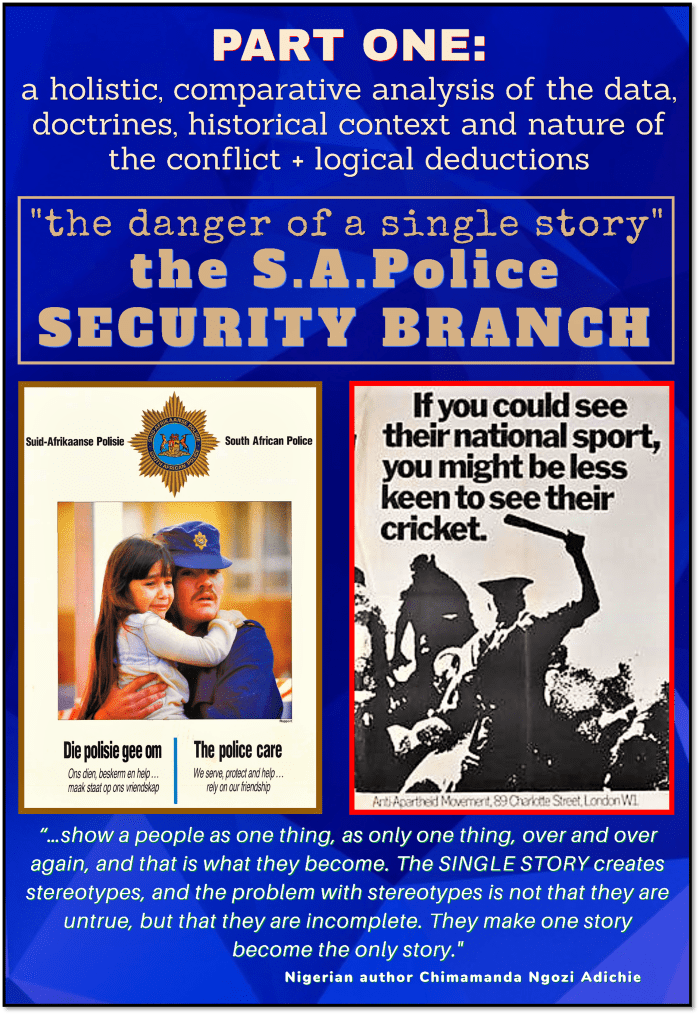
This explanatory poster introduced Part 1 of our e-Book on the SAP-SB
Serialised out of our e-Book with similar title.
EXTRACT #1: WHY THIS SERIES? (and WHAT YOU WILL DISCOVER IN IT)
1.1 What is meant by a “single story”?
In July 2009, the Nigerian author Chimamanda Ngozi Adichie delivered a now-famous lecture that was captured on video as a so-called TED-talk. Her theme was: “The Danger of a Single Story”. It has become one of the most-viewed talks ever, having been viewed almost 30 million times. The transcript has been translated into 49 languages.
The basic message? “Single stories” are dangerous, because they cement in place undifferentiated stereotypes, without nuance. Especially when disseminated by powerful messengers. Such “single stories” are also therefore misleading, by virtue of not being complete. When the supposed reality about any one person, country or entity is limited to and defined by just one such uniform narrative, by a single “story” about it, then it becomes easy to malign those being targeted. Because of “how impressionable and vulnerable we are in the face of a story, particularly as children”.
Adichie relates this ability to cause that a single narrative becomes embedded, to power – to the ability to dominate messaging: “It is impossible to talk about the single story without talking about power. There is a word, an Igbo word, that I think about whenever I think about the power structures of the world, and it is “nkali.” It’s a noun that loosely translates to “to be greater than another.” Like our economic and political worlds, stories too are defined by the principle of nkali: How they are told, who tells them, when they’re told, how many stories are told, are really dependent on power. Power is the ability not just to tell the story of another person, but to make it the definitive story of that person”.
Adichie states that the way to create a single story about something or someone, is to: “…show a people as one thing, as only one thing, over and over again, and that is what they become.”
“The single story creates stereotypes, and the problem with stereotypes is not that they are untrue, but that they are incomplete. They make one story become the only story.”
To illustrate what she meant with a “single story” emitted by a powerful set of messengers and creating a stereotype, she referred to her own initial perception of Mexicans, formed by the powerful English-language media when she studied in the USA: “…as often happens in America, immigration became synonymous with Mexicans. There were endless stories of Mexicans as people who were fleecing the healthcare system, sneaking across the border, being arrested at the border, that sort of thing. I remember walking around on my first day in Guadalajara (in Mexico), watching the people going to work, rolling up tortillas in the marketplace, smoking, laughing. I remember first feeling slight surprise. And then, I was overwhelmed with shame. I realized that I had been so immersed in the (English-language U.S.) media coverage of Mexicans that they had become one thing in my mind: the abject immigrant. I had bought into the ‘single story’ of Mexicans, and I could not have been more ashamed of myself.”
Adichie concluded her talk by emphasizing that: “Stories matter. Many stories matter. Stories have been used to dispossess and to malign, but stories can also be used to empower and to humanize. Stories can break the dignity of a people, but stories can also repair that broken dignity”. (To view this talk of 18 minutes, click here: https://tinyurl.com/496yep6e ).
Adichie isn’t alone in her perceptions about “single stories” – her thoughts find parallels in the influential book: Silencing the Past: Power and Production of History (1995) by the late Haitian historian, Michel Rolph Trouillot, who maintained that history is often told in a slanted manner, to the benefit of powerful forces which silence some sources while favouring others.
1.2 What we want to share with you
These insights of two great African and Haitian authors and thinkers explain the purpose behind this comparative analysis and contextualization of the Security Branch of the South African Police (the SAP-SB for short). By just Googling that search term, one will find a plethora of “stories” that, despite their number, are strikingly unidimensional, establishing a stereotype. Stories in English, the world language (with all of the mighty messaging power which that entails) behind it. Stories that mostly make no pretence at being free of value-judgement and emotion, abounding in terms such as notorious, racist, brutal, upholders of “Apartheid”.
A “single story” about the SAP-SB constructed typically on the basis of dissecting in gory detail, certain (undeniable and truly regrettable) incidents and then extrapolating and generalizing, as if these were representative of an entire institution and of all the officers that served in it. Deliberately “silencing” the other side. Without attention to comparable international data, nor to historical context, or to official doctrines or even to plain logic. In other words, omitting facets that, if included, could contextualise, and explain…
This comparative, holistic analysis of the SAP-SB as institution, is not an attempt to deny, but to legitimately broaden the pervasive “single story” about the SAP-SB that’s encountered in the English-language resources flooding the internet. By putting on record, incontestable historical fact and statistics that illuminate those facets that the “single story” has omitted touching on.
The term “story” is apt here, because (as you as reader will see), there is indeed more than just the “single story” to be told about the SAP-SB. I will often convey my truth, my personal story that I wish to share with you, by telling you things about a particular commanding general of the SAP-SB: my own late father. Thus, stories based on my own first-hand knowledge and experience.
In recent years, renowned researchers such as Dr. Anthea Jefferey of the South African Institute of Race Relations (which, as institution, was not known as a friend of Apartheid!) have started to challenge the veracity and imbalance of another “single story” relating to that era. The story about the “People’s War” epoch in South Africa’s internal conflict for political power – a violent era that was, above all, marked by highly efficient propaganda – with the “single story” that’s in circulation dominating perceptions about what had happened, why, how, and perpetrated by whom? Their research has shown up the propagandistic underpinnings of that particular “single story”: how it is incomplete, counter-factual and in many ways biased for political gain.
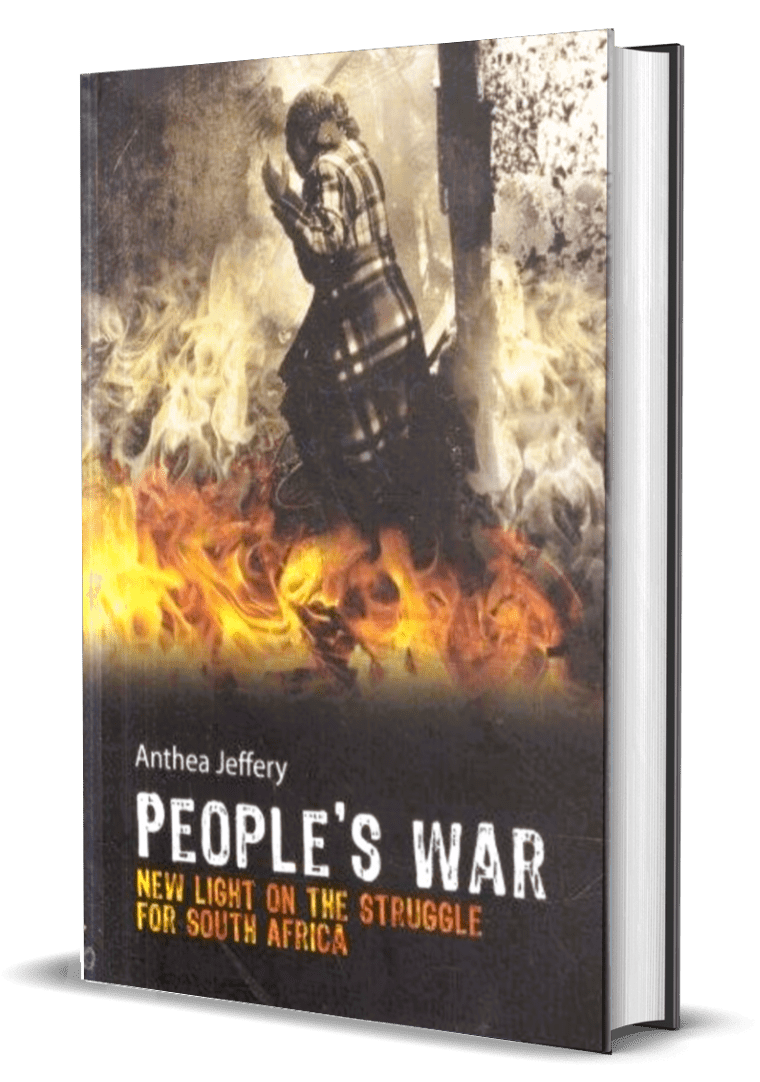
Recent academic research such as that by Anthea Jeffery debunks many myths about the armed struggle, showing it to have been intensely propagandistic, supplemented by brutal intimidation.
It is time that the “single story” about the SAP-SB be similarly researched, expanded and nuanced. Not only for the sake of the accuracy of the historical record, but because the events of so many decades past are now again being pushed to the fore, in the service of political expediency (referring here to the soon to be re-opened criminal cases related to the years 1960 – 1990, but directed exclusively at charging surviving former SAP-SB officers, for which purpose dedicated special investigations units have recently been formed).
Above all, this study is dedicated to the officers who served in the SAP-SB, passed and still alive, but intended particularly for their children, grandchildren, and family members – to supplement for them, with factual evidence, comparison and logical argument, the full story of their ancestors, in all its facets. So that they may have a more complete record and thus understanding, beyond the stereotypical image that the current “single story” presupposes. Because, as Chimamanda Adichie rightly said, it is the children who are most vulnerable in the face of a “single story” – the maligning story that currently dominates unchallenged about their parents or grandparents and about the elite institution they had so proudly served in.
A very human vulnerability that we often nowadays see translated into negative impacts on the psychological well-being and the sense of self (as regards their ancestry) on the part of so many descendants, through a perception of inherited guilt or shame fostered by the “single story” that’s currently in English-language circulation about the SAP-SB.
We hope that, by bringing to the fore facets that have not received recognition in the “single story”, we can enable you, the reader, to expand your understanding and to reach your own verdict on the emotionally charged matter of the SAP-SB’s role in facilitating the transition to a non-racial, democratic South Africa on the Western free-market model; and, in parallel, their success in helping avert the violent imposition of a totalitarian, one-party, Marxist “people’s republic”.
1.3 My Role: an advocate presenting the case for “other side”, so that you can decide.
Humankind has learnt through centuries of experience in its courts of law, that the best way of reaching the whole truth about any matter, is through the adversarial process of the advocates of each side presenting their respective case. With each having put forth the arguments and evidence supporting their version of the truth, the judges then synthesize from the different sides that had been so illuminated, the whole, nuanced and most often very complex truth. Thus, very distinct from having to rely on one-sided, facile stereotypes. It is thereby that true justice is best arrived at.
You, the readers (as the so-called court of public opinion) already have at your disposal the stereotypical “single story” about the SAP-SB, with that side of the truth consisting of a vast litany of English-language material condemning the institution as a whole. Usually by generalizing individual incidents and without differentiating between fact and the intense propaganda of those times.
In this analysis we will (somewhat in the style and manner of being hypothetical “defence counsel” for the SAP-SB) present the other side of the story, the “case for the defence”, based on simple logic and on comparative data plus historical fact. So that you can form your own verdict as to whether the stereotype created by the “single story” is indeed the “whole truth, and nothing but the truth”.
We will be doing so, without denying or trying to defend the indefensible (which indeed on occasion did happen) and without feigning academic objectivity (in the sense of pretending to have no emotional connection to the matter and the men involved. Because that latter linkage clearly exists for me as my late father’s son, and it would be dishonest to try and hide it from you. Always, though, trying to be scrupulously factual and clinically logical, without skipping over uncomfortable realities. So that you can judge for yourself, on the basis of the full spectrum of fact and argument, not just the singular stereotype hitherto presented.
My parents (then) Major Frans & Maxie Steenkamp attending a formal banquet in the 1960's
Here then is the other side of the SAP-SB story, researched and written as the son of a former commanding general of that institution, the late Major-General Frans Steenkamp. My additional qualifications for authoring this article, are that my wife was also an SAP-SB member (part of the control team of Operation Daisy / Major Craig Williamson, a significant spying success).
(Then) Capt Craig Williamson of the SAP-SB on Red Square, Moscow.
I completed my own compulsory national service and Public Service bursary obligations over seven years with the National Intelligence Service, as analyst, and then obtained admission as attorney, and subsequently served as head of diplomatic training at the Foreign Ministry during the transition period to democracy. Following that, I had the honour to serve as the New South Africa’s first ambassador to so-called black Africa.
Apart from my qualifications as a lawyer, I also hold a doctorate in Political Science, with my thesis (which was externally examined by an internationally renowned expert from Cambridge University) having been focussed on the intelligence function of the political system.
Returning to the private sector after my term as ambassador, I established a successful law practice in Franschhoek (in the Winelands, near Cape Town) where at one stage, at one and the same time, I had been elected to serve as chairperson of the local Chamber of Business, as well as of the Community Policing Forum and the local Neighbourhood Watch, plus the Afrikaans cultural organization the Rapportryers, whilst also being simultaneously branch secretary of the local ANC (the ANC of presidents Mandela and Mbeki, that is!). I am therefore not known for holding political biases.
1.4 Did you Know? (Some examples of the data we will share in this series)
Here are just some examples of the kind of facts we will be sharing with you (to be expanded upon in upcoming instalments of this series of extracts).
IF YOU ARE READING THIS ON YOUR SMARTPHONE, PLEASE TURN IT SIDEWAYS (i.e., HORIZONTAL) TO BEST READ THE TABLES BELOW.
Every death of a human is lamentable, whether from natural causes or other - but do the comparative figures actually show the SAP-SB to have been monsters or, in truth, very prudent custodians?
This table puts the scale of South Africa's internal conflict into perspective, when viewed globally.
Table showing the escalation of South Africa's internal conflict 1960 - 1994, with mounting Black-on-Black violence at the end having caused the vast majority of total deaths.
As said before, in the upcoming instalments of this series of extracts from our e-Book, we will deal with these incontrovertible statistics in much more detail.
1.5 The questions we will attempt to help you to answer for yourself
The main question that this study seeks to help readers to answer for themselves, is whether the SAP-SB as institution (and thus the vast majority of its members) was truly this abominable collection of vicious racists who were single-mindedly dedicated to maintaining white supremacy? How does that assumption gel with the outcomes that were realised on their watch, and thus with simple logic?
There is no shortage of media reporting on allegations of brutality associated with the SAP-SB. The typical manner of presentation of such reporting, is to dive deep into the disturbing, emotionally impactful details of specific incidents. These are then presented as being representative case studies reflecting an alleged “consistent pattern of atrocities” that were supposedly common on the part of the SAP-SB. From these individual high-profile cases, a general picture of racist brutality is then extrapolated. The question is: can the truth (the whole truth) be as unidimensional and without nuance as this “single story” purports it to be?
Again: it is not the intention with this study to attempt to deny individual cases of truly despicable acts that were indeed committed and which were clearly both illegal and amoral. Nor is it the intention to try and counter those known, undeniable lapses by means of counter-listing a litany of individual case studies of similar or worse atrocities committed by the other side. Two wrongs simply won’t ever make a right. The real question that needs to be answered, though, is whether such SAP-SB transgressions were in fact representative of the entire unit, its policies and operational doctrines? Or were they individual lapses of control and insight? And if so, how do they compare in scale, to statistics from elsewhere?
What has been lacking in reporting on the SAP-SB, is a holistic assessment of the institution as such, done comparatively (with regard to other similar circumstances elsewhere during the Cold War) and within the context of the particular historical setting within which South Africa’s internal political conflict had played out, taking account of the nature of the conflict (which was essentially political), and in which propaganda played a supremely important role in the intense contest to sway local and international opinion.
What is missing in the public record, is a factual presentation of evidence from the “other side” that may favour a more nuanced and complete understanding of the role of the security forces and of the SAP-SB in particular. Especially as regards its doctrine and policy goals. Also, the institutional as well as constitutional and jurisprudential framework, plus the geo-political circumstances and the historical and demographic (tribal) realities that determined the operational context. So that you, as the reader, can (in the final analysis), apply simple logic to the same challenges that SAP-SB members knew they were facing.
Because it is likely that you will then arrive at the same logical conclusions that practically every member of the SAP-SB would have reached for themselves, as regards what comportment would have best served the interests of the State and their own institution, during that fierce contest for public opinion. Which would most certainly not have been for SAP-SB officers to give substance, through ill-considered illegal actions, to propaganda of systemic police brutality.
This study aims to help fill the gaps left by the existing “single story” and thus provide the reader with a fact and logic-based conceptual reference framework aimed at fostering comprehension, so that – in the final analysis – the reader can make up his / her own mind about the true role that the South African Police Security Branch played in facilitating the birth of the non-racial New South Africa. A legitimately arrived at transformation into a non-racial, liberal “state of laws” with a free market democracy on the Western model, instead of the country having suffered the violent imposition of a dictatorial, one-party “people’s republic” with a failed economy, on the Marxist model.
What we would like to help you as reader understand, is whether the SAP-SB as institution is best represented by the example of a Dirk Coetzee (as the “single story” suggests) or by a Major-General Frans Steenkamp? (Whose acute understanding of the true nature of the conflict for political power, and his written instructions to his officers, we will share with you, to judge for yourself).
This latter comparison brings me to that essential declaration of own interest, which I placed on record at the very outset, as author of this study: I do not claim to have a detached position on this matter (although, as lawyer and political scientist, I did try my best to be empirical and unbiased). The aforementioned general was, inseparably, my late father. I have referenced him as counter-example to a Coetzee or De Kock, simply because I have the necessary first-hand knowledge to be able to hold him up as a representative example of a very moral, a-political and law-abiding SAP-SB officer. Singling him out somewhat, is thus not a filial attempt at glorification, but is based purely on the fact that I can write with authority about him, thanks also to the archive he had left me – something which I obviously cannot do, with regard to other individual officers. That he wasn’t unique, though, I do not doubt.
Here below are the key questions that need to be answered before one can arrive at a complete understanding of the SAP-SB, its nature and role, and the kind of men and women who formed part of it:
- How does South Africa’s internal political conflict (from 1960 – 1994) compare, in terms of relative scale, when statistically measured against other such conflicts of race, tribe, ideology and liberty fought during the 20th century?
- How many people actually died of all causes in SAP-SB detention over that period, and how does that compare to deaths in detention elsewhere?
- What was the nature of South Africa’s internal conflict(s) from 1960 – 1994?
- Within what kind of constitutional and juridical framework did the SAP-SB operate?
- What was the over-arching historical context within which the colonial-era conflicts in Southern Africa (both externally and internally driven) played out, and which thus constituted the interwoven tapestry of propaganda and reality against which the SAP-SB must be judged, in context?
- Who were the men and women of the SAP-SB? Why did they join, and what outcomes were they committed to achieving?
- What were the operational doctrines that the SAP-SB had adhered to when it performed its function of maintaining law-and-order (as defined by the then parliament and directed by the constitutionally anointed Cabinet of the day) as opposed to that of the ANC?
- Who had “just cause” on its side and was “armed struggle” truly the only, or even best, option available? and
- What does the application of plain logic tell us, when we look at their self-interest and the unique and fruitful outcomes that were in fact achieved on the SAP-SB’s watch, in moving South Africa to a democratic, non-racial dispensation based on the liberal Western model, with a free market economy?
In short – was the SAP-SB indeed the uniquely monstrous, racist entity that certain political interest groups now want to portray it to have been, when viewed in context against what had commonly occurred across the range of armed struggles that world-wide had typified the Cold War era? Or, when we compare the data pertaining to the SAP-SB, to the statistics of atrocities committed against persons that had been held in detention by the liberation forces themselves?
Were the operational doctrines adhered to by the SAP-SB morally and legally defensible? Especially if those doctrines are compared internationally, in the context of the revolutionary “people’s war” that was being waged against the then South African state? A war sponsored by Moscow in advancement of its own position in the Cold War (the latter being the over-arching conflict that had defined that whole era, around the globe?). Particularly when we compare the philosophy inculcated by the SAP-SB’s commanding officers, seen against the violent “people’s war” doctrine that had underpinned the terror-based actions of the liberation movements?
Or even compared with the operational doctrines taught by the liberal democracies like the USA and followed by its allies, for example in the Southern Cone of Latin America – the infamous Plan Condor? Likewise, if compared with the doctrine and record of the United Kingdom in Northern Ireland, during the euphemistically termed “Troubles” there? What do the statistics tell us, if we compare the record of the SAP-SB with modern-day policing casualty figures in the New South Africa itself?
Doesn’t one need to distinguish between the institution as such, and the deeds of a few “bad apple” individuals? To properly assess and comprehend, one must recognise also the determining role played by foreign actors, by the inherited colonial state structures, as well as by the driving force of tribalism. Especially, the often-violent contest for power between black political movements. Because these factors determined the harsh, undeniably violence-prone, real-world setting within which members of the SAP-SB were duty-bound to maintain law-and-order and the public peace.
What does common sense lead us to deduce, when we look at the operational environment within which the SAP-SB perforce had to perform its duties? The very public, media accessible, high court driven jurisprudential system, as well as the system of parliamentary supervision with questions to cabinet ministers, and the inevitable coverage in the media? Factoring in, also, the propaganda-driven campaign of the ANC, facilitated by a receptive press?
To objectively and holistically provide a conceptual reference framework enabling the reader to answer these questions, is important. Both for reconciliation in South Africa, as well as for the sake of advancing the mental well-being of all who had lived through that conflict. For the sake of the whole truth being recorded for posterity.
Perhaps most so, for the sake of the vast majority among the erstwhile members of the SAP-SB (and their children) who are witnessing how this elite institution is now being denigrated as irredeemably, uniquely evil – while in truth it had played a pivotal role in making possible the transition to a non-racial, democratic, Western-style South Africa (and in avoiding the armed imposition of a one-party Marxist state).
Some anti-communist memorials erected after the fall of the USSR commemorating the millions who died at the hands of communist regimes
Such a holistic historical context accounting also for the Cold War imperatives and the very real communist threat, must be truthful and balanced if it is to allow for fair and just comparison, with no attempted whitewash of tragic occurrences on either side – all of which needing rightly to be condemned. It is also of no real value to try and apportion now which of the pot or the kettle should be viewed as the most blackened by respective records of violent atrocities. Neither should this study be seen as an exercise in defending White imperialism and racial discrimination in general, and Apartheid in particular – which, with hindsight, can clearly be seen to have been absolutely abhorrent and deeply harmful and hurtful to people of colour everywhere in the colonial world, especially under British rule. No matter that it may have been “the done thing of that epoch”.
The above statement of moral principle does not mean that this study is an attempt to “convert” adherents of the “single story” to a more balanced view. As demonstrated by the vicious response that the announcement of the death of the late president FW de Klerk has elicited from those quarters, it would be utterly naïve to have such expectations – those people are too invested in the “single story”, and it brings them too much political benefit to this day, for that to happen.
TO BE CONTINUED IN THIS BLOG

